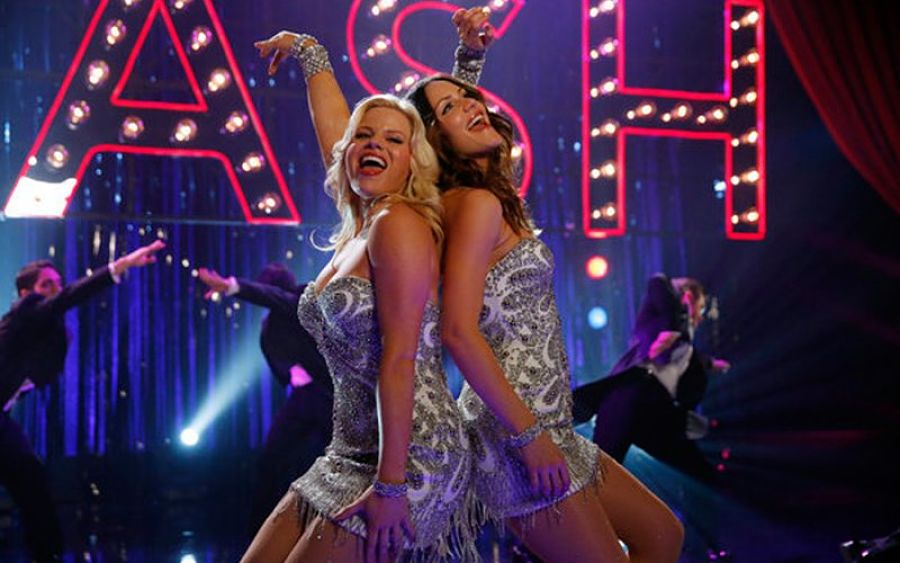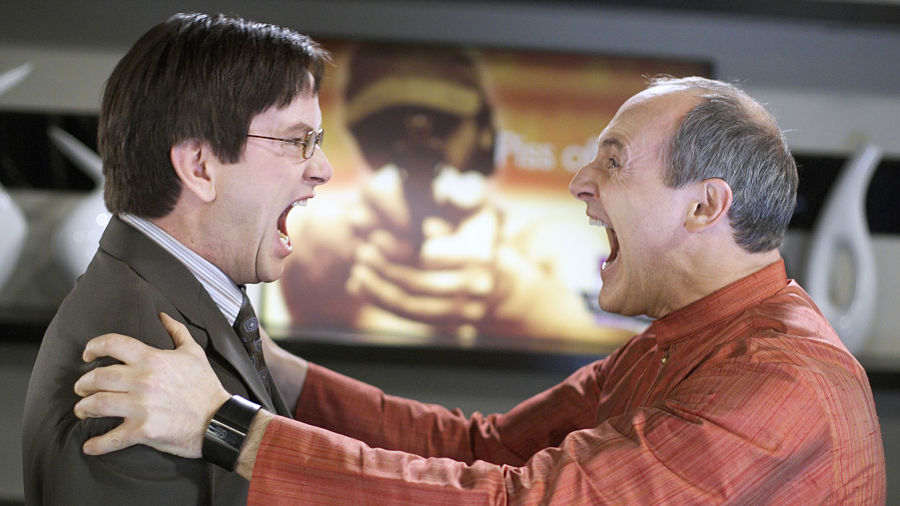Throughout television’s history, many of its most important and beloved programs have focused on the family unit. This started, as it would, with actual families; your Cleavers, your Bradys, your Waltons and Nelsons and Ingallses. As the medium evolved, the perspective broadened. We saw adoptive families, workplace families and, of course, the three wise kings of the alternative family: “Cheers,” “Seinfeld” and “Friends.” This continued focus probably has something to do with the way TV was consumed. You encountered these characters once a week—always at the same time—and so your relationship to them became routinized and folded neatly in with the rest of your life. They had a presence not unlike that of the cousin you saw for dinner every Sunday night.
And if anyone knows alternative family units, it’s theatre people. The idea that theatre offers a safe haven for the world’s oddballs and outcasts is both prevalent and blazingly true. Inside this haven, the misfit toys find likeminded brethren and cluster together to form a kind of family, living in worlds and relationships of their own devising. Everything about a theatre production’s dynamic tends towards this mentality: the emotional and physical intimacy of rehearsals, the womblike claustrophobia of the theatre itself, even the delineation that the fourth wall draws between us and them. It’s no surprise, then, that theatremakers are behind a lot of our best TV shows and that the theatre world has become subject matter for their stories. In the last 15 years, we’ve had two shows set in the world of the theatre, and those two shows—“Slings & Arrows” and “Smash”—make for an interesting study in contrasts.
“Smash” ran for two seasons on NBC, telling the story of the making of a big new Broadway musical, Bombshell, about the life of Marilyn Monroe. “Smash” was first and foremost conceived as a primetime soap opera, so it depicts a glossy, frothy, Vanity Fair version of the theatre life. Everyone wears really cool scarves and lives in simultaneously massive and cozy-seeming New York City apartments, and star Katharine McPhee’s bone structure is like some sort of divine folly. If there was ever any doubt about the kind of world “Smash” lives in, it is entirely erased the minute the words “that Bruno Mars thing at La MaMa” are uttered. Yes, those words were uttered on the show, in all seriousness. All of which adds up to pretty great escapist television. It does, however, also mean that there are no real misfit toys on the island that is “Smash.”

Watching it, that’s what I couldn’t get over: Everyone seems so together, even when they’re supposed to be a wreck. The dashing British cad of a director Derek Wills gives his lead actress Ivy Lynn a note, and Ivy looks down briefly—then nods and smiles immaculately, like she totally gets the note. Like all it took was a moment of self-reflection. Like that note didn’t immediately send her into a vortex of confusion, a vortex that would eventually engulf our director as well, suddenly not so caddish at the thought that his vision is completely misguided, a thought brought on by the 50 shades of self-doubt that the actor is happy to let him see sweep across her face!
Debra Messing’s book writer character Julia is the closest thing the show has to the kind of roiling neurosis we all know from the theatre, and she’s clearly show creator and playwright Theresa Rebeck’s proxy. But even here, it’s mostly for show: all dithering hand gestures and illicit affairs with hunky dudes and charmingly misguided attempts at parenting. The show Bombshell isn’t really a safe haven for any of these people because these aren’t the kind of people that need safe havens. They’re on Broadway! These people are fine out in the real world, wrapped up all sexy in their really cool scarves.
To be fair, it may not be “good TV” to truly depict theatre’s navel-gazing chaos—to watch someone, say, pacing around their tiny, crumbling apartment in their underwear for eight hours, ruined by the nervous energy that comes with the creative process in doubt. But “Slings & Arrows” certainly gave it a shot. Running for three seasons, the Canadian cult classic is beloved in the theatre world for its depiction of the behind-the-scenes shenanigans at the fictional New Burbage Theatre Festival and the uncanny way it captures the shabby allure of these kinds of places. Not at all coincidentally, the show practically runs on the anxiety of its main characters—the festival’s artistic and administrative leaders—and it doesn’t shy away from a certain dark outlook.
Indeed, the series kicks off with the particularly pathetic and alcohol-drenched death of New Burbage’s longtime artistic director, Oliver Welles, then follows his successor and protege, Geoffrey Tennant, himself a once great, now washed-up actor, as he tries to revive the aging festival while obeying his own, very addled inner muse. Tennant is essentially the show’s anti-hero, a character so paralyzed by self-importance as to become sympathetic and charming. Actor Paul Gross turned this paralysis into a kind of mania, and Geoffrey became the very kind of weirdo who could only find a home and a family inside the walls of a theatre.
The “Slings & Arrows” intro always featured longtime New Burbage company members and cut-ups Cyril and Frank leading a bar full of performers and patrons in some Shakespeare-themed drinking song. It’s a lovely little microcosm for the world that the show creates: a world filled with weirdos like Geoffrey, living out weird, complicated little lives. Whereas Ivy predictably sleeps with Derek under satin sheets on “Smash,” New Burbage leading lady Ellen instead screws a caterer from the opening night party. These people aren’t destined for the stage—they have nowhere else to be. And every night, after the performance is done, they all gather together like families do to sing old, loveworn songs and get nice and drunk together.
Dylan Southard is a dramaturg and creative director for the production company VR Playhouse.


